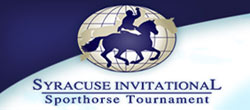Movement for Social Change in the Equestrian Community
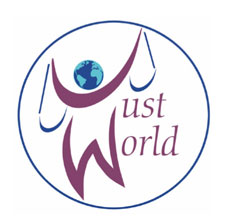 Today when we mention social change, we often think about social media, such as Facebook or Twitter. Although these entities have changed us socially, JustWorld International is reaching out to change the world for the better.
Today when we mention social change, we often think about social media, such as Facebook or Twitter. Although these entities have changed us socially, JustWorld International is reaching out to change the world for the better.
“Bringing Equestrians Together for a Just World” is the hallmark of JustWorld International, a non-for-profit humanitarian organization that supports life-changing education and nutrition programs for some of the world’s neediest children. Riders and horse shows on the West Coast, including the Blenheim Spring Classic II, are joining the movement to lend the passion they have for riding to their commitment to helping others.
Founded in 2003 by former grand prix rider Jessica Newman, JustWorld International acts as a catalyst for positive change in the developing world by working with local partner organizations to provide basic education, nutrition, health, hygiene, and vocational programs for children in impoverished communities in Honduras, Cambodia, Guatemala, and Brazil. JustWorld raises funds throughout the international equestrian world, from individuals to partner horse shows to corporate sponsors.
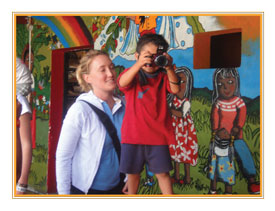
JustWorld is unique with its origins in the international show jumping community and its focus on not only raising funds through events at horse shows but also on developing programs that allow riders to become compassionate and generous global citizens.
Significantly, JustWorld has built a community of active donors and volunteers who make annual pledges of “time, talent, or treasure” as JustWorld Ambassadors. Currently, there are more than 400 professional, junior, and amateur Rider Ambassadors representing 35 different countries. Technical Official Ambassadors (judges, course designers, stewards) from around the globe also represent JustWorld at international shows whenever they officiate. JustWorld also partners in fundraising with competitions in the United States, Canada, Mexico, Guatemala, Honduras, and Europe.
Regarding the important partnership with horse shows, Executive Director Jessica Newman notes that the association “ensures that the link between equestrians and those in need will be a direct link as opposed to a connection through sponsorships and donations only.” Horse shows participate by holding fundraising events, exhibitor parties, Calcuttas, and special classes; donating parking fees and portions of entry fees; and hosting signature JustWorld Horseless Horse Shows. The JustWorld Horseless Horse Shows are special events, since they include younger children as participants, introducing them to charitable events as “Kids Helping Kids.”

Proceeds from JustWorld events help to develop long-term, sustainable education projects, targeting communities where local organizations have evolved to help children who often fall beyond the reach of government and large-scale humanitarian programs. JustWorld and its partners focus on creating and maintaining educational and vocational programs that will begin to equip the children for future lives of self-sufficiency, while providing health care, food programs, and clean water to immediately improve the daily lives of these children.
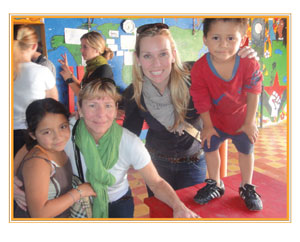
JustWorld Rider Ambassadors and donors are encouraged to visit the projects in Honduras, Guatemala, Cambodia, and Brazil, and more than 120 donors have done so. Newman, who leads these donor trips, is thrilled to offer other riders the experience of seeing the needs of so many poor children and the wonderful changes that JustWorld has brought about through the efforts of riders and other equestrians.
Newman explains that her equestrian connections have been especially beneficial to forming relationships with local, grassroots organizations. These connections helped to circumvent confrontation with some of the political unrest that is present in the countries where JustWorld gathers support. “We create reciprocal partnerships with our local establishments and all funding is monitored very carefully according to criteria mandated by international nonprofits,” says Newman. “This way, we avoid a lot of the corruption in developing countries.”
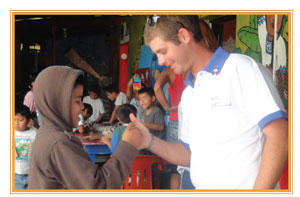
Recently, JustWorld has garnered official partnerships with Equine Canada (the Canadian national federation) and the European Equestrian Federation, and Newman was a guest at the FEI General Assembly in November 2010, where she had an opportunity to spread the word about JustWorld to the heads of national federations from around the world. Now that national federations are signing on and JustWorld is expanding, Newman notes, “Within the next five years, I hope to see JustWorld shows in every country where there is competitive horseback riding.”
JustWorld International is a recognized 501(c)3 charitable organization in the United States and a registered Association 1901 in France. Local branches also have been established in Mexico and Honduras. JustWorld International has no political or religious affiliation.

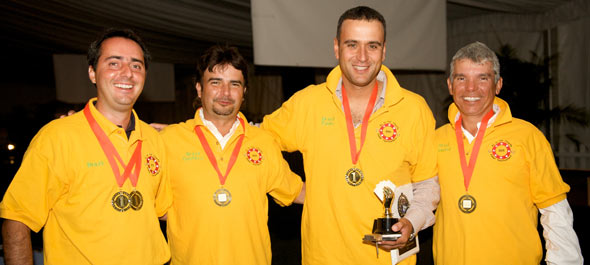
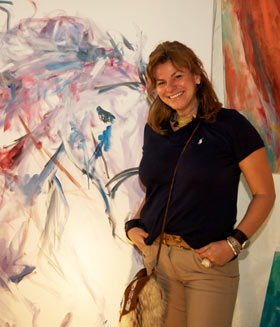

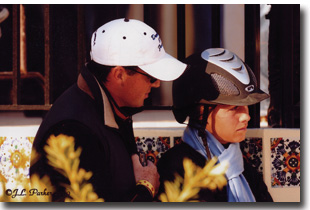 set her sights on this life long ago and now she is living it. Always looking to be at the top of her game, she develops her own horses. With partner and soon to be husband Conan Conway, she seeks and finds quality horses, keeping a select group for sale on her farm. Located in the equestrian neighborhoods that are literally a ride away from the Palm Beach International Equestrian Center, Blue Hill Farm is not only a great little facility, it isthe place where everyone goes to test their poker skills on Monday nights during the season. The evening’s winner could walk away with a nice sum of money, and everyone has a great time.
set her sights on this life long ago and now she is living it. Always looking to be at the top of her game, she develops her own horses. With partner and soon to be husband Conan Conway, she seeks and finds quality horses, keeping a select group for sale on her farm. Located in the equestrian neighborhoods that are literally a ride away from the Palm Beach International Equestrian Center, Blue Hill Farm is not only a great little facility, it isthe place where everyone goes to test their poker skills on Monday nights during the season. The evening’s winner could walk away with a nice sum of money, and everyone has a great time.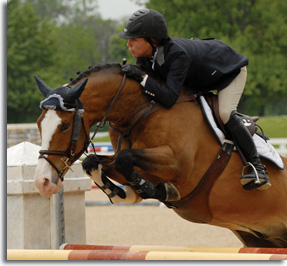

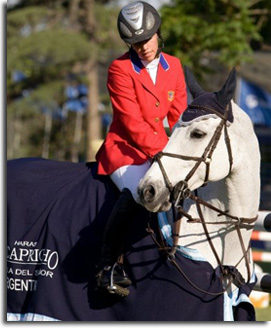
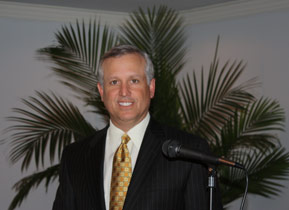

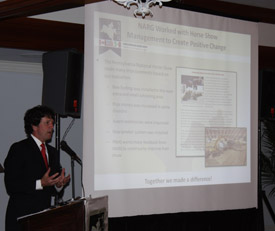
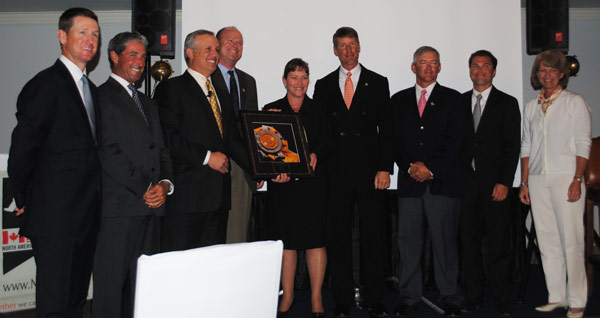

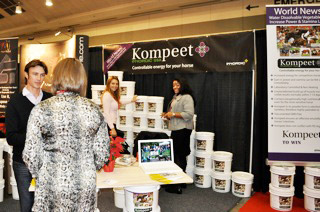
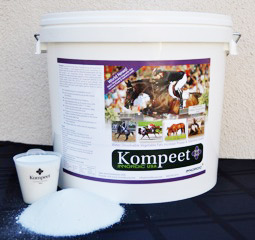 EqSol: Don’t high-energy feeds provide this source of fat? Or what about other supplements?
EqSol: Don’t high-energy feeds provide this source of fat? Or what about other supplements?

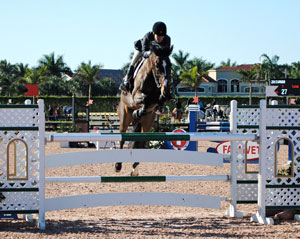 Beezie was attesting to the importance of helmet use while riding horses, and pointed out that if a sport such as skiing, in which helmet use was nonexistent a decade ago, can experience a universal shift to helmet wearing, there’s no reason that the horse industry can’t do the same.
Beezie was attesting to the importance of helmet use while riding horses, and pointed out that if a sport such as skiing, in which helmet use was nonexistent a decade ago, can experience a universal shift to helmet wearing, there’s no reason that the horse industry can’t do the same.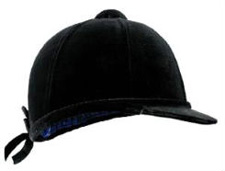 Show Jumpers Should Strap One On
Show Jumpers Should Strap One On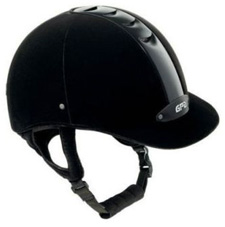 A two-time Olympic gold medalist and show jumping icon, Beezie is fully aware that thousands of horse enthusiasts look up to her and other grand prix show jumpers as role models. She believes that not wearing her helmet, even in the warm up ring at a competition, sets a bad example for the up and comers who watch her and tend to emulate her every move. “For the last four or five years, I’ve always had a helmet on, every time I’m on a horse.”
A two-time Olympic gold medalist and show jumping icon, Beezie is fully aware that thousands of horse enthusiasts look up to her and other grand prix show jumpers as role models. She believes that not wearing her helmet, even in the warm up ring at a competition, sets a bad example for the up and comers who watch her and tend to emulate her every move. “For the last four or five years, I’ve always had a helmet on, every time I’m on a horse.”


